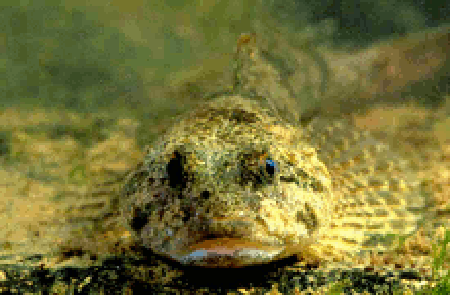Bullhead (Cottus gobio)

The bullhead is a small, bottom-living fish that inhabits a variety of rivers, streams and stony lakes. It appears to favour fast-flowing, clear shallow water with a hard substrate (gravel/cobble/pebble) and is frequently found in upland streams. However, it also occurs in lowland rivers on softer substrates so long as the water is well- oxygenated and there is sufficient cover. It is not found in badly polluted or acidified rivers and is therefore a good indicator of a river's health.
The species is widespread and often common in rivers across Europe. Good populations are widely distributed in freshwaters across almost the whole of England and much of Wales, but in Scotland the bullhead is restricted to the Clyde and Forth catchments, where it is thought to result from an introduction.
Bullhead in the Irfon
While bullheads are common throughout Europe, they show considerable genetic diversity with a variety of life history strategies. Within the Irfon their populations are limited by acidification and they do not occur in rivers with pH<6.0. The acid amelioration work has benefitted this species. This action will allow expansion of their range within the SAC upstream and the full utilisation of existing habitat, so by lifting this ceiling the population could increase by as many as 15,000 individuals. The ISAC project has improved 30kms of habitat for bullhead.
